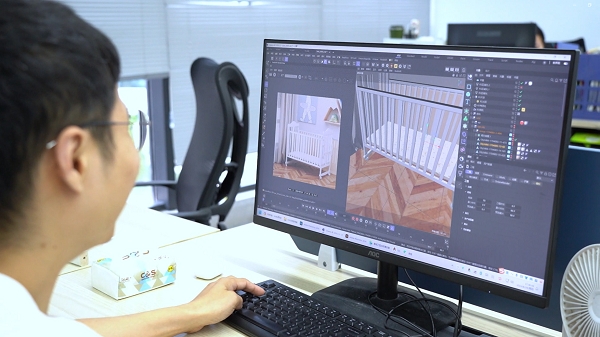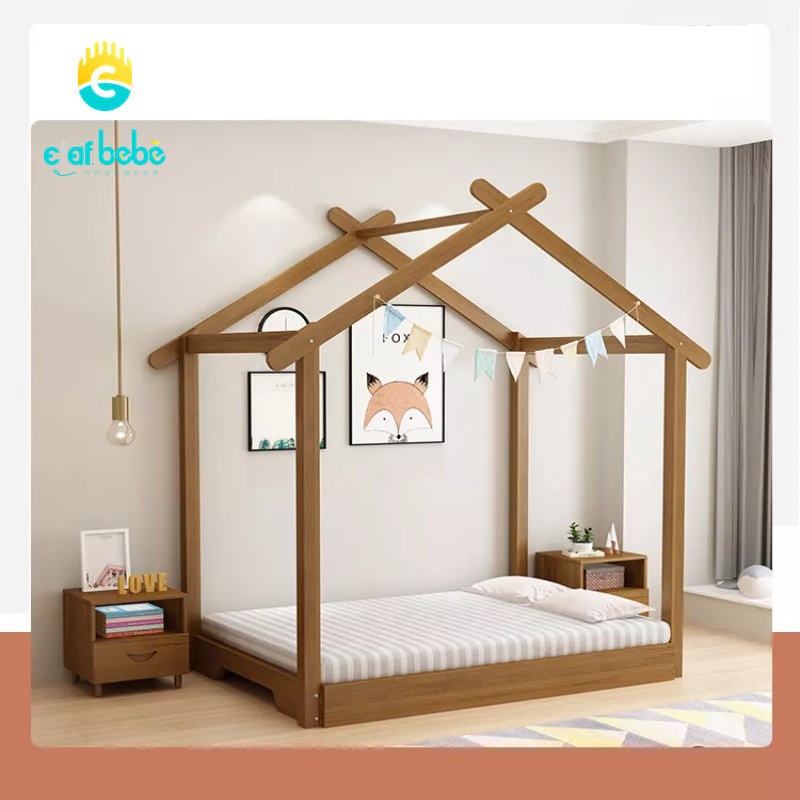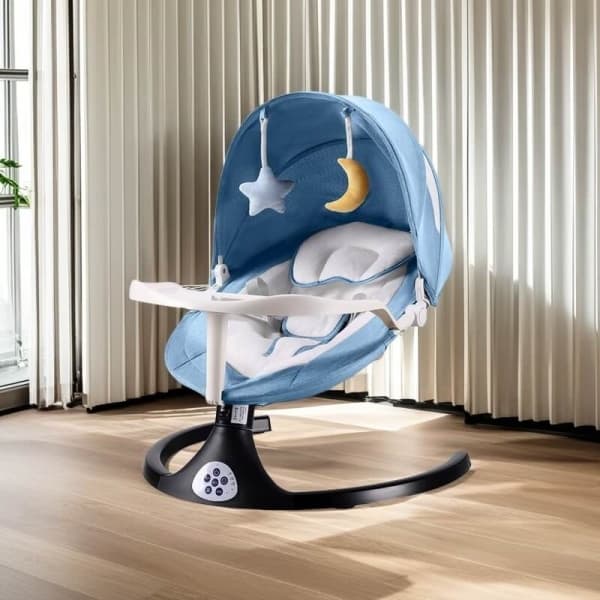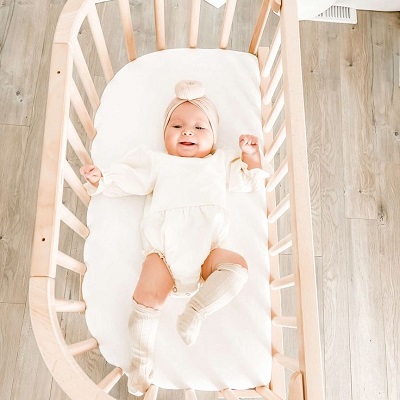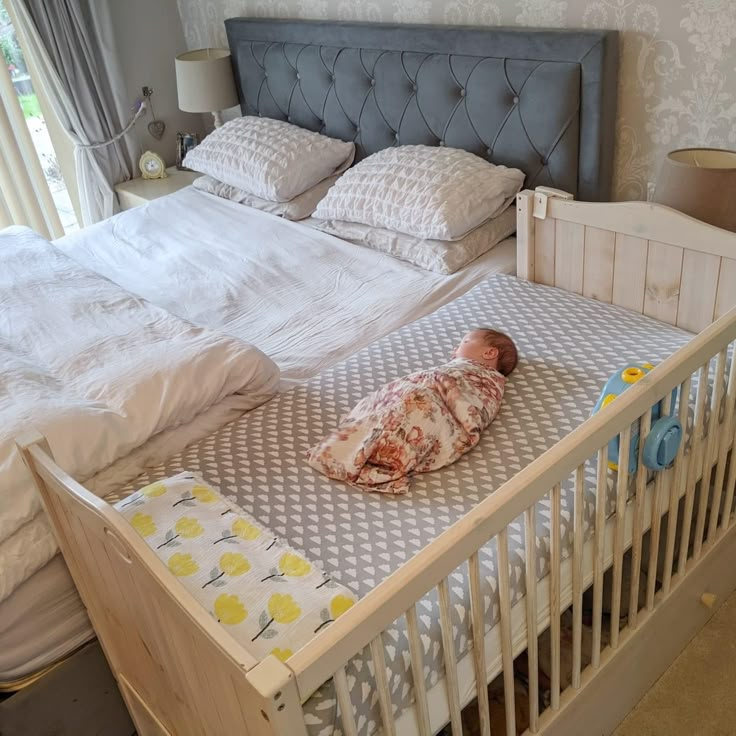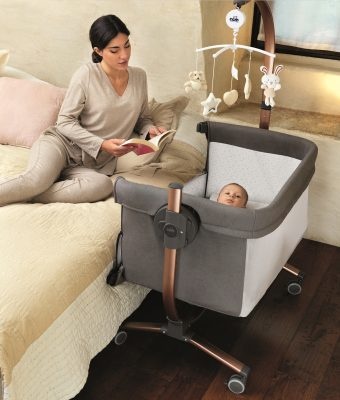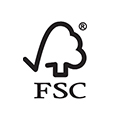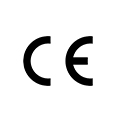Your toddler wakes up from a nap, stretches their tiny arms, and climbs out of bed on their own—no tears, no crib rails, no frantic calls for help. This simple act of independence is at the heart of the Montessori philosophy, and it’s exactly what a Montessori bed is designed to empower.
For decades, parents have relied on cribs to keep little ones safe during sleep. But as the Montessori method gains traction, more families are reimagining their children’s sleep spaces to align with principles of autonomy, respect, and child-led exploration.
In this guide, we’ll walk you through everything you need to know to choose the perfect Montessori bed—one that nurtures your child’s independence while keeping them safe, supported, and inspired.
Why Choose a Montessori Bed?
Fosters Independence
A low-to-the-ground bed lets toddlers enter and exit safely without adult assistance, building confidence and decision-making skills. Dr. Maria Montessori famously said, “Never help a child with a task they believe they can do themselves.”
A 2020 study in the Journal of Montessori Research found that children with access to Montessori-style environments showed earlier development of self-regulation skills compared to peers in traditional setups.
As an extension of the Montessori education philosophy in the sleeping space, the Montessori bed’s design philosophy stems from a deep respect for children’s autonomy and environmental adaptability. It also reflects the shift in parenting values - from an adult-led care model to an empowerment model that supports children’s self-development.
Encourages Safe Exploration
Crib rails can feel restrictive to curious toddlers, often leading to frustration or unsafe climbing attempts.
Montessori beds abandon closed fences and reduce the sense of spatial oppression by opening up the field of vision. Its design strictly follows the laws of sensory development of infants and young children. The mattress directly lands on the ground to avoid the feeling of shaking, providing a solid tactile feedback similar to the ground, allowing children to get in and out of bed more at ease.
Supports Motor Development
Montessori beds usually eliminate the physical barriers of fences, allowing infants and young children to enter and exit freely according to their own needs. This design directly responds to the development needs of children’s motor sensitivity period (usually starting from 10-18 months).
Independent climbing movements exercise large muscle group control and spatial judgment. Children can choose to go to bed and get up at their own discretion according to their degree of sleepiness, and cultivate the ability to self-regulate their biological clock.
Occupational therapists often praise Montessori beds for promoting “movement-rich” environments, which are critical for early physical development.
Key Features to Look for in a Montessori Bed
The unique design of the Montessori bed makes many parents both excited and hesitant – is this low bed without a fence really safe? Can children adapt to getting in and out of bed independently?
In fact, choosing a good Montessori bed is not a test of professional knowledge, but requires starting from the child’s perspective and understanding the intentions behind the design. The following are three key points that parents need to pay attention to during the selection process.
Caratteristiche di sicurezza
The core of the Montessori bed is “limited freedom”, and safety is the prerequisite for realizing this concept.
The height of the bed is the key. A height of 15-25 cm from the ground allows children to get on and off easily, and ensures that they will not be injured even if they accidentally roll down. You can imagine that this height is about the height of a stair step, and the child’s little feet can just touch the ground.
Look for solid wood frames over particleboard, which can warp. High-quality solid wood (such as beech and maple) is not only stable and durable, but the natural wood grain and touch can also let children feel the warmth of natural materials.
Pay attention to the environmental certification mark and avoid choosing products with pungent odors or rough surfaces.
Design Space from the Child’s Perspective
The traditional crib is like an “air cradle”, while the Montessori bed is the starting point of the child’s independent world. When choosing, pay attention to the openness and vision of the bed: the unobstructed design on three sides allows the child to see the entire room when lying down, and this visual sense of control can reduce anxiety about falling asleep.
Imagine that when the morning sun shines into the room, the child can sit up, observe the surroundings, and even climb out of bed to get the picture book from the low cabinet after waking up – this opportunity for free exploration is exactly what the Montessori bed wants to give.
Flexible Design to Accompany the Child’s Growth
A good Montessori bed should be like a child’s partner, constantly adjusting as they grow. In infancy (0-1 years old), you can temporarily not install the bed frame and directly put the mattress on the floor mat to facilitate parents’ care.
When the child starts to learn to walk, add a removable low guardrail (about 15 cm high) to prevent unconscious rolling in sleep and prevent them from getting in and out of bed independently during the day.
If you plan to use it for a long time, you can choose a style with expandable size. For example, you can choose a 70 cm wide mattress in the early stage, and then expand it to 90 cm by adding accessories after the child is 3 years old.
Types and Styles of Montessori Beds
The design of Montessori beds always revolves around “supporting children’s autonomy”, but its form is not single. The following is an in-depth analysis of the five mainstream types to help parents find the most suitable one.
Letti a terra
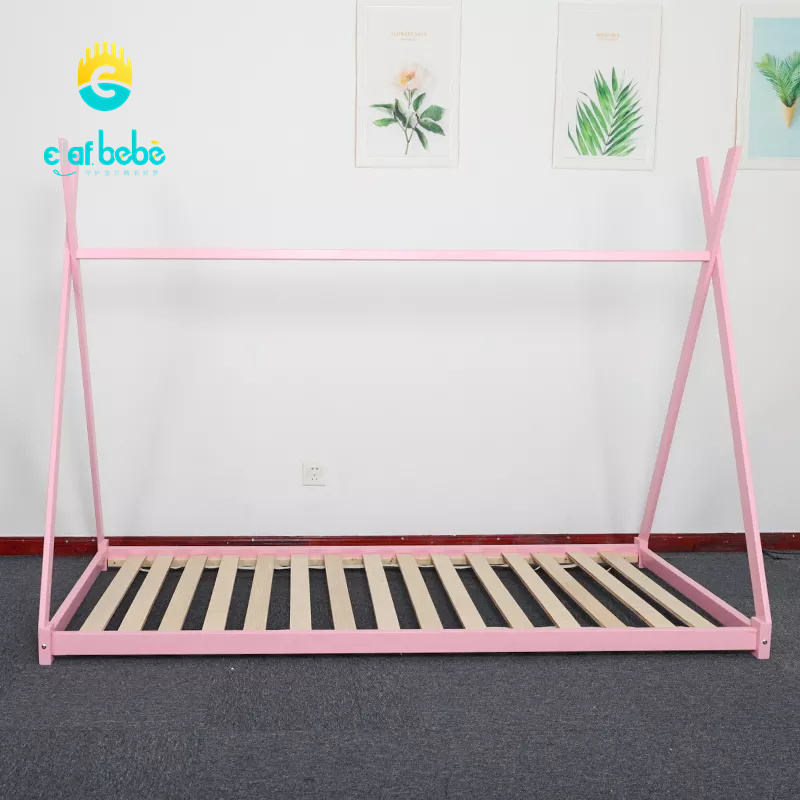
Design highlights: The mattress is placed directly on the ground without any bed frame or fence. It is the most original form of the Montessori bed. This design allows children to experience “equal” spatial relationships from birth – their sight is level with the ground, they can observe the environment freely, and move independently.
Suitable for families:
Families advocating minimalist parenting
The baby room is small (≥6㎡)
Hope to minimize safety hazards
Usage suggestions:
Choose a hard mattress with a thickness of ≤8cm (such as a coconut palm mat) to avoid turning over due to being too soft.
Lay short-haired carpets or foam mats within 1 meter around the bed to define the sleeping and activity areas.
Pair it with a 15cm high open low cabinet to place bedtime reading materials and comfort toys.
Regularly check the bottom of the mattress for ventilation and moisture resistance, and turn it over every two weeks.
House-Frame Beds
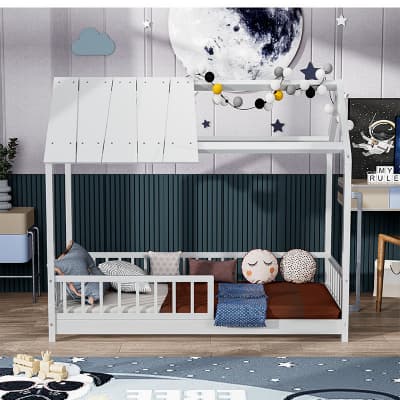
Design highlights: The top of the bed frame is designed in the shape of a roof, and the side extends out to form a “wall” shape, forming a private space like a hut. The house frame bed can create a feeling of “home within a home” and provide children with an exclusive space. This semi-enclosed structure not only retains the openness of the Montessori concept (no door and no lock), but also gives children a sense of security through visual boundaries.
Suitable for families:
Children have a strong demand for independent space (such as over 3 years old)
Home style tends to be pastoral or Nordic style
Hope to cultivate children’s imagination and territorial awareness
Safety details:
The roof height is ≥80cm, ensuring that adults can bend over to take care of it.
The side “windows” are designed to be round or oval, with a diameter of ≤15cm to prevent leaning out.
Canopy Beds
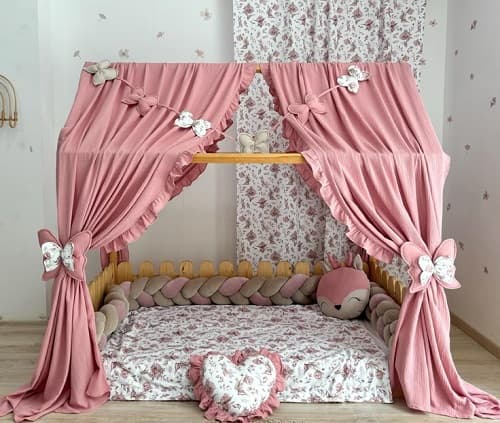
Design highlights: Create a soft and flowing visual buffer layer on the top of the bed through thin gauze or linen curtains. This design is especially suitable for highly sensitive children – the gauze can filter out glaring light without completely isolating ambient sound, helping children balance a sense of security and a desire to explore.
Suitable for families:
Children have difficulty falling asleep or are sensitive to light
Room height ≥2.4m (avoid depression)
Want to create a dreamy sleeping environment
Usage plan:
Choose natural gauze with a light transmittance of more than 70% (such as organic cotton, ramie).
Install a sliding track to gather the gauze to the end of the bed during the day and gently pull it closed at night.
Use a projection lamp to project a starry sky or ocean patterns on the curtain.
Safety reminder:
The length of the curtain must be ≥30cm from the ground to prevent children from stepping on it and getting entangled; remove dust regularly to prevent allergies.
Low Platform Beds

Design highlights: The bed frame is 20-30cm above the ground, slightly higher than the floor bed, suitable for the transition from traditional cribs. A 15cm high removable fence can be installed on the side to prevent accidental rolling during sleep and not hinder the child from entering and exiting independently when awake.
Suitable for families:
Children are trying to sleep independently for the first time (1.5-3 years old)
Worried about the temperature difference problem of using the floor bed directly (such as in cold areas)
Need storage space (storage boxes can be placed under the bed)
Usage suggestions:
The pedal width is ≥25cm, and the edge is inward 5° to prevent slipping.
The bed board spacing is ≤5cm to avoid getting your hands and feet stuck.
Anti-collision strip installation slots are reserved to meet the needs of different stages.
Convertible Montessori Beds
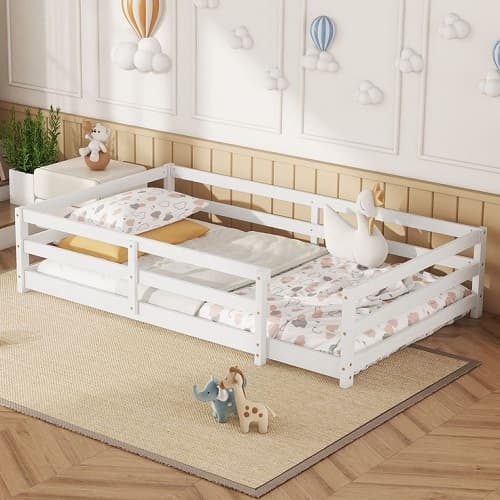
Design highlights: Through modular design, the form transformation of “sleeping tool → learning space → game base” is realized. For example:
- Infant period: low bed with guardrail (25cm high)
- School age: remove the guardrail and lengthen the bed frame to become a desk
- Second child stage: combine two units to form bunk beds
Suitable for families:
Limited budget but pursuing long-term value.
Children have a wide range of interests and need flexible space.
Plan to adjust the room layout in the future.
Selection suggestions: Give priority to beech or bamboo fiber materials to ensure that they will not deform after multiple disassemblies and assembly; confirm that accessories can be purchased separately (such as connectors, expansion boards).
Step-by-Step Guide to Choosing
Step 1: Assess Your Child’s Needs
Each child is a unique individual. Their age, mobility, and sleeping habits will quietly tell you what kind of bed to choose.
Children aged 1-3 need a sense of security close to the ground. A thick mattress directly on the ground is a good choice. If your child can already walk with support, you can consider a low bed 15-20 cm above the ground.
Children over 3 years old may begin to yearn for their own secret base. A “hut bed” with a roof shape or a “princess bed” surrounded by gauze will make their eyes shine. This type of bed can satisfy the sense of independence without completely enclosing the space.
Children who like to roll around in bed before going to bed are suitable for spacious floor beds, while children who are easily awakened may need a semi-enclosed, low platform bed.
Step 2: Measure the Space
With the bed as the center, leave a safe area at least 1 meter wide. You can lay your child’s favorite cartoon mat here so that they can play freely after waking up.
If your child likes a bed with a roof, make sure there is enough space between the roof and the ceiling (at least 50 cm) to avoid a sense of oppression. Just like we don’t like to walk with our heads down, the “sky” above the bed should also make children feel open.
Leave a “secret passage” (at least 50 cm wide) between the bed and the wardrobe so that children can shuttle freely like a small train.
Step 3: Set a Budget
$50-100: You can buy a basic floor mattress + cushioning mat set, or a second-hand high-quality wooden bed (remember to check the corners carefully). Parents with good hands-on skills can also take their children to DIY with old wooden boxes, which is both environmentally friendly and meaningful.
$100-500: There are many thoughtfully designed options in this range. For example, an adjustable height growth bed that can be used from 2 to 6 years old, or a fun bed with a removable roof to meet the fantasies of children at different stages.
$500 and above: High-end brands will use more durable wood (such as North American beech) and provide a warranty of more than 5 years. This type of bed can often be transformed into a desk or easel, becoming a “Transformer” in a child’s childhood.
Step 4: Check Certifications and Safety Standards
Among the dazzling array of products, remember these three “peace of mind codes”:
Solid foundation: Shake the bed frame vigorously with both hands; there is no creaking or loose feeling. Just like checking the swing frame, the child’s bed must withstand the “naughty test”.
Gentle touch: Use your palm to carefully stroke every corner, and the wood surface should be as smooth as a baby’s skin. If you smell a pungent smell, it’s like smelling stale fruit- give up decisively.
Authoritative commitment: Look for international safety certification marks (such as ASTM/EN) on the packaging, just like checking the shelf life of food for children. These certifications mean that the bed has undergone rigorous anti-fall and anti-pinch tests.
What Mattress to Use for a Montessori Bed?
The American Academy of Pediatrics (AAP) recommends a firm sleep surface to reduce the risk of Sudden Infant Death Syndrome (SIDS) and ensure proper spinal alignment. Press the mattress—if it leaves an indentation, it’s too soft.
Since floor beds sit close to the ground, opt for a mattress with airflow channels or natural materials (like organic cotton or wool) to prevent overheating. Pair the mattress with a waterproof, hypoallergenic cover. Trust me, spills and accidents happen—even with the most independent toddlers.
Aim for 4–6 inches. Thinner mattresses keep the bed low for easy access, while thicker ones (over 8 inches) can make climbing in/out tricky for little legs.
Not all mattresses are created equal. Here’s a breakdown of the most popular options:
| Types | Caratteristiche |
| Organic Cotton or Wool Mattresses | Eco-conscious families or kids with sensitive skin. Free from synthetic chemicals, flame retardants, and VOCs. But, a Higher price tag. |
| Materassi a molle | Steel coils provide sturdy support, and they’re less prone to sagging than foam, long-term use. |
| Natural Latex Mattresses | Naturally antimicrobial and resistant to dust mites. Latex molds to the body without sagging—ideal for active sleepers. |
| Memory Foam Mattresses | Contours to the body, lightweight, and often cheaper than organic options. But it traps heat more than natural materials. |
Montessori beds come in all sizes. Crib Mattress (27” x 52”) is perfect for toddlers transitioning from a crib. Fits most Montessori bed frames designed for littles. Twin Mattress (38” x 75”) is a long-term solution for preschoolers or shared rooms. Just ensure the bed frame is low enough for easy access.
Already have a crib mattress? Great! Most fit perfectly into a Montessori bed frame. Just check: Is it still firm? Does it have any tears or stains?
Domande frequenti
Q1: When is the right time to switch to a Montessori bed?
Most children transition between 12–24 months, but readiness matters more than age. Look for signs like climbing out of a crib, showing interest in independence, or resisting naps.
Q2: Are Montessori beds safe for active sleepers?
Absolutely—if the room is prepared. Use a firm mattress, anchor furniture to walls, and add soft flooring like a rug or foam tiles around the bed.
Q3: Can I use a regular twin mattress for a Montessori bed?
Yes, but keep the frame low. A twin mattress on a 6-inch platform works well for older toddlers. Just ensure the total height (mattress + frame) doesn’t exceed 12 inches for easy access.
Q4: How do I childproof the room with a floor bed?
Think like a toddler: Get on their level! Cover outlets, secure dressers to walls, remove choking hazards, and use cordless blinds.
Q5: My child keeps leaving the bed at night. What should I do?
This is common! Create a calming bedtime routine and ensure the room is sleep-friendly (dim lights, quiet toys).
Conclusione
Choosing a Montessori bed isn’t just about furniture—it’s about nurturing your child’s confidence, curiosity, and independence. As you weigh options, remember that Safety always comes first. Simplicity is key—neutral designs and natural materials create calm.
So go ahead—take that leap. Picture your little one curling up with a book in “their” bed or proudly making it each morning. These small moments of independence are where the magic of Montessori comes alive.
Clafbebe is an experienced manufacturer of Montessori beds and toddler beds that meet and exceed international safety standards, specializing in providing first-class baby furniture products at wholesale prices to dealers and retailers.

